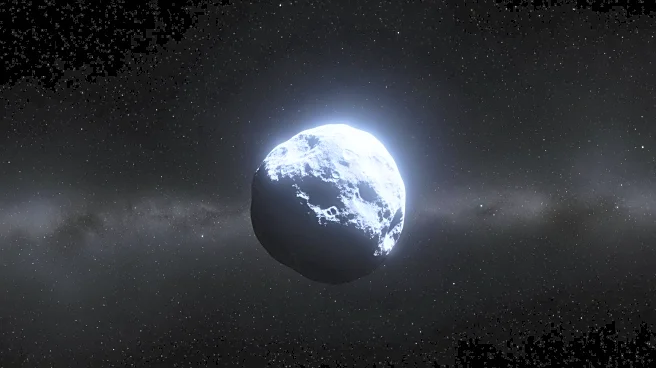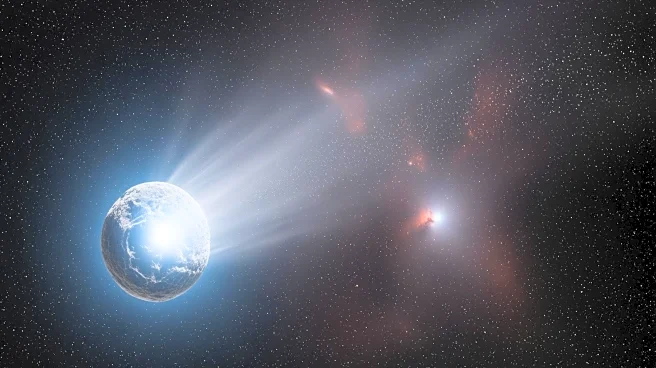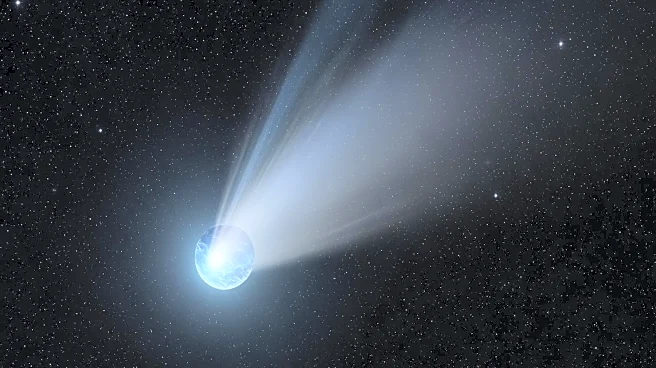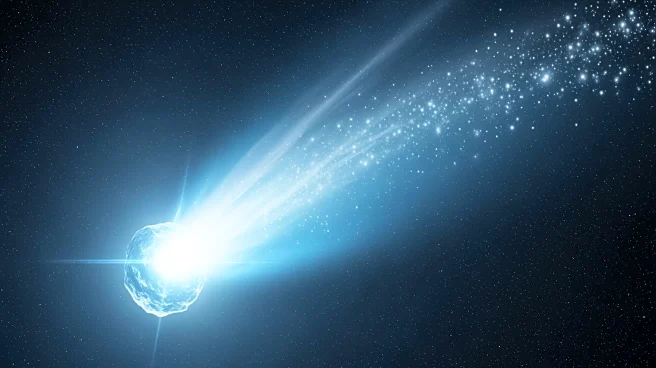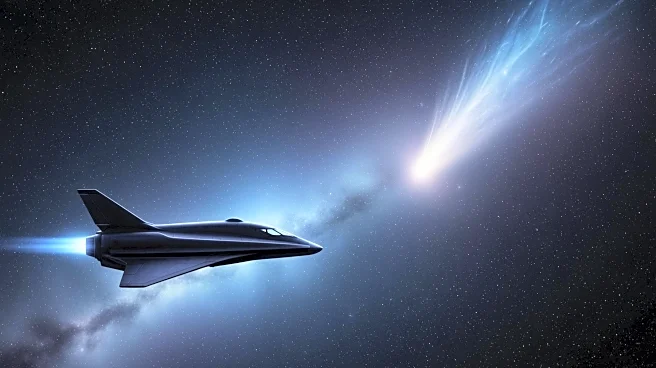What's Happening?
NASA has released new images of the interstellar object 3I/ATLAS, captured by the HiRISE camera on the Mars Reconnaissance Orbiter. The images show the object as a 'fuzzy white ball' illuminated by the Sun,
which is a cloud of dust and ice known as the coma. Harvard astronomer Avi Loeb has raised questions about the jets emanating from the object, which appear to be pointing in the direction of motion rather than towards the Sun. Loeb suggests this could indicate a technological signature, although NASA maintains that 3I/ATLAS is a natural comet. The object is expected to make its closest pass to Earth on December 19, providing further opportunities for observation.
Why It's Important?
The debate surrounding 3I/ATLAS highlights the ongoing scientific inquiry into interstellar objects and their origins. If the object is indeed a natural comet, it could provide valuable insights into the composition and behavior of comets from other star systems. However, if Loeb's hypothesis of a technological signature is correct, it could have profound implications for our understanding of extraterrestrial technology and the possibility of alien life. The upcoming close pass of 3I/ATLAS to Earth will allow scientists to gather more data, potentially resolving the debate and advancing our knowledge of interstellar phenomena.
What's Next?
As 3I/ATLAS approaches its closest pass to Earth, scientists are preparing to use ground- and space-based telescopes to study the object in greater detail. This will involve measuring the composition, speed, and mass loading rate of the jets, which could confirm whether they are natural or technological in origin. The results of these observations could either support NASA's stance that 3I/ATLAS is a natural comet or lend credence to Loeb's theory of a technological object. The scientific community and the public are likely to follow these developments closely, given the potential implications for our understanding of interstellar objects.
Beyond the Headlines
The controversy over 3I/ATLAS also touches on broader themes in scientific research, such as the balance between skepticism and open-mindedness. While NASA has dismissed fringe theories about the object, Loeb's persistence in exploring alternative explanations underscores the importance of considering all possibilities in scientific inquiry. This situation also highlights the role of public interest and media coverage in shaping scientific discourse, as the mystery surrounding 3I/ATLAS has captured the imagination of many.
